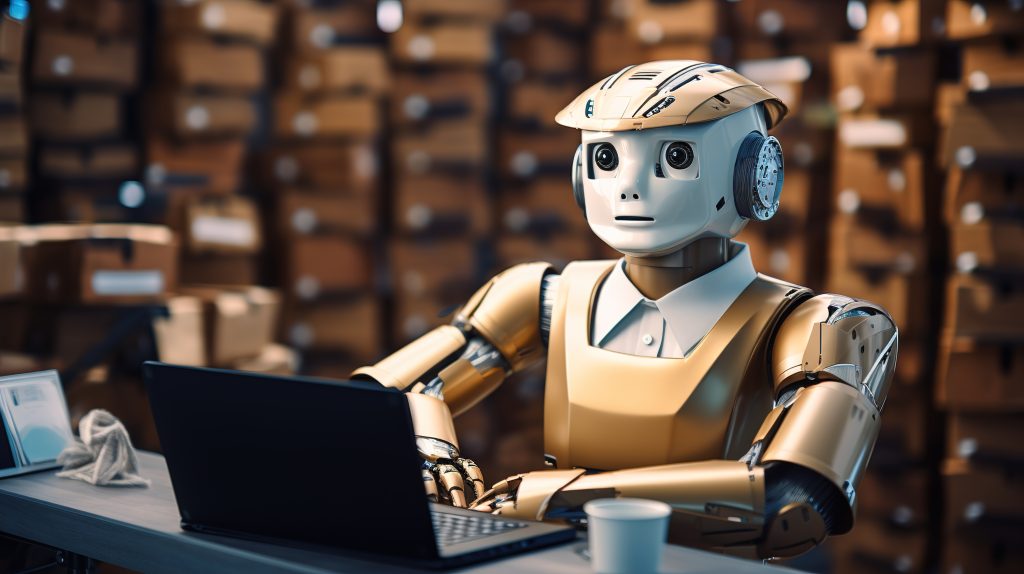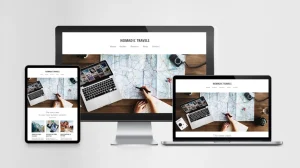Artificial Intelligence (AI) is no longer a futuristic concept it’s a driving force that’s redefining how we work, collaborate, and create. From automating repetitive tasks to empowering smarter decision-making, AI in workspace is transforming it into a space of unprecedented productivity and innovation.
As businesses adopt technologies like ChatGPT, Microsoft Copilot, and Google’s Duet AI, the line between human and machine collaboration continues to blur. Let’s explore how this digital revolution is reshaping the professional landscape.
Table of Contents
1. Automation: From Routine Tasks to Intelligent Workflows
For decades, automation meant robots replacing manual labor. Today, with AI-powered automation, machines don’t just execute commands they learn and adapt.
In offices, AI tools like UiPath and Zapier AI automate repetitive tasks such as data entry, invoice processing, and customer support ticketing. This frees employees to focus on creative, strategic, and human-centered work.
According to a McKinsey & Company report, AI could automate 30% of the activities in most occupations by 2030. However, rather than replacing humans, it’s augmenting their capabilities.
For instance, AI chatbots now handle basic HR queries or IT support tickets, while human agents deal with complex issues making workplace operations faster and more efficient.
2. Smarter Decision-Making with Predictive Analytics
AI doesn’t just automate it analyzes and advises. Businesses use predictive analytics and machine learning to turn raw data into actionable insights.
For example, Salesforce Einstein AI predicts customer behavior, enabling sales teams to focus on the most promising leads. Meanwhile, tools like Power BI Copilot and Google Cloud Vertex AI help executives forecast market trends and optimize strategies based on data-driven insights.
A study by Harvard Business Review found that organizations using AI in workspace for decision-making are 23% more profitable than those relying solely on human judgment.
This marks a shift from intuition-based to intelligence-driven leadership, where algorithms act as trusted advisors rather than replacements.
3. Revolutionizing Communication and Collaboration
Collaboration has evolved from emails to real-time, AI-enhanced teamwork.
Platforms like Microsoft Teams with Copilot and Slack GPT are using generative AI to summarize meetings, draft follow-ups, and even translate conversations in real time.
Imagine finishing a meeting and instantly getting an AI-generated summary, action items, and relevant files all without lifting a finger. That’s the future of workplace communication.
According to Forbes, these tools not only save time but also reduce communication gaps in hybrid and remote setups.
4. AI Tools Enhancing Employee Productivity
AI is transforming individual productivity as well. Tools like Notion AI, GrammarlyGO, and ChatGPT Enterprise help employees write, code, brainstorm, and plan more effectively.
Developers use GitHub Copilot to generate code suggestions, while marketers rely on Jasper AI and Writesonic for instant content drafts.
These tools act like personal digital assistants, enhancing output quality while saving valuable hours. A Microsoft Work Trend Index 2024 report revealed that employees using AI tools were 30% faster and reported higher job satisfaction.
5. The Future of AI in Workspace: AI and Human Synergy
The integration of AI in workspace has sparked debates about job displacement. While it’s true that certain routine roles will evolve or disappear, AI is also creating new job categories such as AI ethicists, prompt engineers, and data curators.
The World Economic Forum predicts that AI will create 97 million new roles globally by 2025, many focused on human-AI collaboration.
Rather than a threat, AI represents a partnership one where humans provide emotional intelligence, creativity, and ethics, while AI handles scale, precision, and speed.
This “co-bot” model (collaborative robots and humans) is already being used in industries from manufacturing to healthcare, enabling smarter and safer workflows.
6. Challenges of AI in Workspace
Despite its promise, AI adoption brings several challenges:
- Data privacy and security: Handling sensitive workplace data demands strict compliance with frameworks like GDPR.
- Skill gaps: Employees need training in prompt engineering, AI ethics, and data literacy.
- Algorithmic bias: AI decisions must be transparent and fair, avoiding discrimination or misinformation.
Organizations like OECD AI Policy Observatory are leading global efforts to ensure ethical AI adoption in business environments.
Conclusion
Artificial Intelligence is not replacing humans it’s elevating them. From automating tedious work to providing data-driven insights, AI in workspaces is transforming them into smarter, more adaptive ecosystems.
The future belongs to professionals who can work alongside AI, leveraging its power to enhance creativity, productivity, and innovation.
As the workplace continues to evolve, one thing is clear: AI in workspace isn’t just changing how we work it’s changing why we work.
Also Check AI and Cybersecurity – Powerful Digital Defense – 2025



